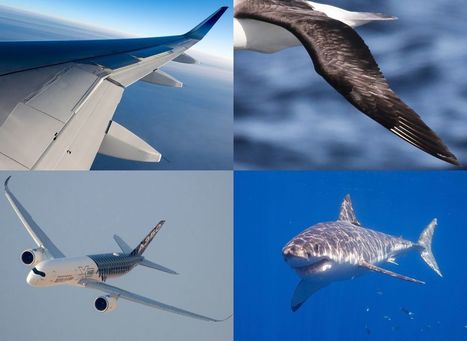The growing science of biomimicry focuses on what humanity can learn from the world, and Airbus engineers are learning quite a lot about efficient solutions for aircraft design that nature has spent millions of years refining.
Research and publish the best content.
Get Started for FREE
Sign up with Facebook Sign up with X
I don't have a Facebook or a X account
Already have an account: Login
 Your new post is loading... Your new post is loading...
 Your new post is loading... Your new post is loading...

Marcelo Errera's curator insight,
July 10, 2015 10:42 AM
The design evolution process never ends. There are some robust associations between features that guide the designs which live longer.
In other words, the best design today will eventually be replaced by tomorrow's best of "de jour".
|
|
















